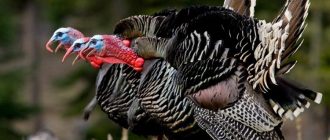Looking to spot the Francis Marion Wild Turkey on your visit to it native national forest? Read on to find out about the beautiful ecosystem for Francis Marion Wild Turkeys…
The Francis Marion National Forest is known for its fabulous ecosystem which gives one access to different birds and poultry. This massive habitat includes swamps, hill forests, salt marshes and both hardwood as well as wetland swamps. The forest is home to over 300 different species of both non-migratory as well as migratory birds from across the country.
The most popular birds spotted in this area are the wood stork, the endangered red cockaded woodpeckers, as well as the swallow tailed kite. It is also home to wild turkeys which are frequently sought out by many people who enjoy viewing the massive birds.
Since this forest was ravaged by Hurricane Hugo in 1989, the employees at the forest have worked on artificially constructing more than 400 new nesting ho;es for the birds to allow the woodpecker populations, in particular, to be restored to their previous numbers.
While bird watching is a rewarding experience throughout the Francis Marion National Forest, there are the prime areas, which are particularly well known for hosting wonderful species of birds and offering optimal locations to view their activities.
Advantages of Watching Francis Marion Wild Turkey
A perfect vantage point is provided by the Buck Hall recreation area which has a 300 yard sea wall along the Atlantic Inter-coastal Waterway. As you visit along the seawall you can catch the cool breeze and amazing views of the waterway while taking in the wildlife.
Other good parts include the plantations in South Tibwin and North Tibwin. They feature approximately 15 miles of dirt roads which can be accessed by foot or on a bicycle. You will be greeted by mottled ducks, red shouldered hawks, the river water, bald eagles and songbirds among others. The southern part of Tibwin is preferred by mountain bikers as well as hikers because the ecosystem offers them pine-laden uplands and tidal marshes.
Hike the Francis Marion Swamp Fox Trail
The trail was constructed in 1968 by Boy Scouts and named after Francis Marion to commemorate his service during the Revolutionary War. He was also known as the Swamp Fox because he always managed to escape pursuing British troops by disappearing into the swamp.
You will likely notice a lot of wild turkeys and the white tailed deer on these tracks. The fauna and flora on this trail are mind-blowing and include meadow flowers and orange millwort as well as pitcher plants, which are carnivorous. So you need to be extremely careful during your hiking trip, especially if you happen to be a small flying insect. There are beautiful longleaf pinecones as well as bottomland hardwoods and shrubs in this area offering a diverse ecological environment for wild turkey and other birds to flourish.
Interesting Facts about Francis Marion National Forest
Since the forest follows a longleaf ecosystem the forest department conducts very controlled burns during the winter months to destroy populations of damaging insects and diseases. This helps to protect the forest system and control the plant populations which would otherwise compete for the limited resources of nutrients, soil, light and water.
An interesting fact about the ash produced by fires is that the wooden ash is actually able to be converted into different chemical compounds which can be utilized by plants. In recent years burns offs have also been scheduled in spring and early summer.
It is recommended if you want to visit the Francis Marion National Park for wild turkey sightseeing and bird watching, that you check beforehand to plan your visit and avoid those areas where the scheduled burns are to take place.





